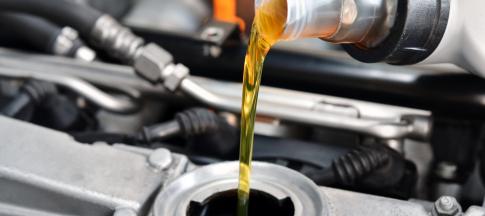
There are lots of parts and processes in cars that you may not know about, including engine remapping.
Learn about car engine remapping, how it works and if you need it.
What is engine remapping?
Engine remapping, sometimes known as ‘chipping ’, is a modern way of increasing a car’s performance by modifying its onboard computer, which is known as an electronic control unit, or ECU.
It's a quick and relatively cost-effective process that involves adjusting (or replacing) microchips in a car’s ECU to overwrite the manufacturer’s factory settings.
An ECU is set to limit a car’s performance abilities. This might be to extend the life of the car, to aid reliability or limit emissions. It also enables manufacturers to launch economy and performance versions of the same model.
Towards the end of the 20th Century, car makers started fitting Engine Control Units (ECUs) to cars. These can be accessed via on-board diagnostic (OBD) ports which allow mechanics to connect a laptop to the ECU to analyse problems. OBD ports are also used to remap engines.
It can take just minutes to overwrite an ECU's default settings with new ones programmed to enhance a car’s overall performance. There will be an immediate improvement in the speed and power of a car and the engine will also be more responsive.
Types of remapping
Depending on who you approach, you're likely to be offered various types of remapping, or engine tuning. For instance, there might be an economy version designed to improve fuel efficiency. The increase in torque will mean fewer gear changes and accelerator pedal movement, thus improving MPG and driveability.
More expensive performance-enhancing remaps will probably require hardware upgrades and replacement engine parts, such as a new turbocharger.
Some companies also offer automatic gearbox remapping, which increases shift response times, and alters the up-shift and down-shift points.
Turbocharged engines – both petrol and diesel – are the perfect engines for chip tuning, and the process can also be used in vans and trucks.
Normally aspirated (non turbo) petrol engines can still benefit from remapping, but the results are less impressive.
So, remapping an engine can result in a horsepower boost, increased torque, improved fuel economy, better throttle response, smoother power delivery and safer overtaking, but it's not all good news.
The possible downsides of engine remapping
Car insurance
As with any vehicle modification, you’ll have to declare engine remapping to your car insurance provider. If they’re happy to continue insuring you to drive the vehicle, it may result in a higher premium and a policy change fee.
Warranty voided
If you choose to get an engine remap that isn’t approved by a manufacturer or approved dealership, your car warranty may be invalidated.
This may not be such a concern if you driver an older vehicle out of warranty.
Worse fuel economy
An increase in engine power usually comes at the expense of higher fuel consumption.
Fuel grade change
Once your car has been remapped you may need to buy higher octane fuel, which is typically more expensive.
On the limit
Increased power can put more of a strain on a vehicle’s engine, clutch, brakes and tyres.
Safety concerns
When cars are developed engineers spend hours testing on and off track and in all kinds of conditions. Remapping an engine can introduce an element of unpredictability.
Selling your car
A chipped engine might be an issue when you come to sell your car, but ultimately it will depend on whether your buyer is happy or not with the changes you have made.
Tuning boxes: an alternative to engine remapping
Another way of enhancing power in a petrol or diesel engine is to opt for a plug-in tuning box. Not only is it a cheaper solution than engine remapping, but it's possible to install the box yourself.
Also known as chip tuning boxes, they work by "tricking" the ECU into increasing the quantity of fuel injected into the cylinders, enabling a boost in pressure, therefore resulting in more torque and power.
In other words, tuning boxes are plugged into the engine's electronic control unit and don’t alter the manufacturer’s software. Additionally, they can be installed and removed quickly.
But the same concerns (above) also apply to tuning boxes.
How much does remapping cost?
The procedure can cost as little as £150 and basic remapping can be reversed just as quickly, should you or a future owner decide it's not such a good idea after all.
But all in all, there are plenty of factors – both good and bad – to weigh up if you're considering an engine remap.
I'm an experienced journalist, digital editor and copywriter, now specialising in motoring. I’m editor of Automotive Blog and have worked across the media in newspapers, magazines, TV, teletext, radio and online for household names including the BBC, GMTV, ITV and MSN. I’ve produced digital content in the financial sector for Lloyds Bank, Nationwide and the Money Advice Service. I'm married with two children and live near Bath in Somerset.



